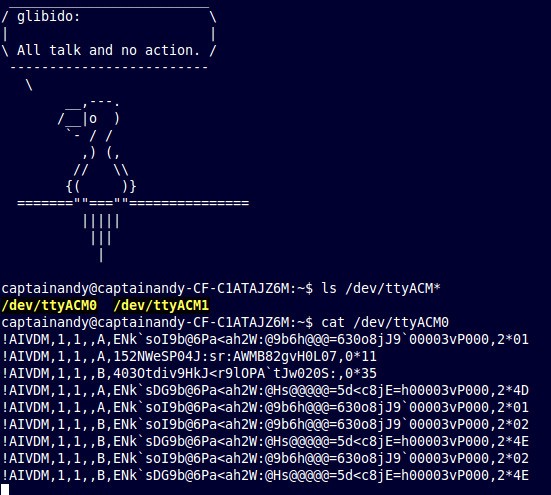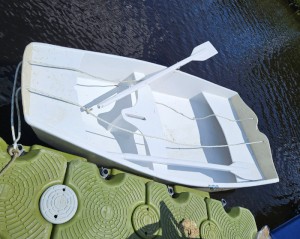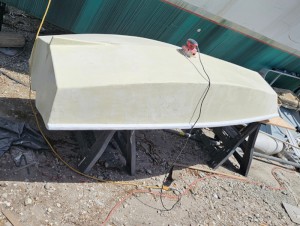Kaimusailing
s/v Kaimu Wharram Catamaran
| Vessel Name: | Kaimu |
| Vessel Make/Model: | Wharram Custom |
| Hailing Port: | Norwalk, CT |
| Crew: | Andy and the Kaimu Crew |
| About: | Sailors in the Baltimore, Annapolis, DC area. |
23 April 2024 | St Marys, GA
D4 Launchie
The laptop pooped the bed, so I have to scurry around with alternatives. Not as bad as typing on the phone.
17 April 2024 | St Marys, GA
Dinghy Skeg
I was suffering with what seemed like a cold and also had allergy symptoms. I awoke and felt fine. The green pollen that was coating everything was gone. Maybe it will return.
07 April 2024 | St. Marys, GA
Clammy Hands
Items came in from TEMU, the Chinese cut rate retailer. One was a nice little drone that cost about twelve and a half dollars. It looked like an easy thing to play with while I coughed and sneezed. I was fighting a summer cold, even though it is not summer elsewhere, it seems like it here. A nice [...]
02 April 2024 | St. Marys, GA
Sun Doggie
After laminating the cedar strips onto the gunwales of the dinghy I found the screws I used wouldn’t come out. The epoxy had seized them. The screw heads were stripped so I cut a straight slot in the heads with the cut off wheel. The cedar smoked when the screw heads got red hot. I could remove [...]
21 March 2024 | St. Marys, GA
Just Add Water
The rainy weekend started off with overcast and fog but no rain. It looked like I might be able to get something done on the D4 dinghy. I wanted to change the bow seat which is really the bow deck. The sailing option uses the deck to hold the freestanding mast. I didn’t like how the deck looked, [...]
01 March 2024 | St. Marys, GA
D4 Dinghy Alternative Seats
The rain event was more wind than rain, strong winds with gusts up to 44 mph. We drove into town to see what the harbor was like. There was a small sailboat that had dragged anchor and was sitting close to shore. The tide was out. We left and played with Bleu at Notter’s Pond.
dAISy meets U-Blox

.
The pilothouse was a mess, a repository of numerous tool boxes, the electrical box that had maybe 1/4 of the electrical tools and supplies in it. The catch all box that Richard and Gill left me when they launched their boat. It was full of useful tools. Maybe too heavy for them.
.
I had a tool box full of plier type of tools, crimpers, scissors, channel-lock pliers, pliers, sheet metal cutting scissors, e-ring pliers of several types, and the vice-grips that get lost. A box of ratchet sockets, handles, bits and sockets, and some drivers for phillips head screws or torx head. Other boxes had handle tools, like screwdrivers and allen wrenches. Sometimes it is difficult to know which box to stow a tool. There is also a box of sailing hardware, blocks and snatchblocks, cleats, rope clutches.
.
I moved stuff around in the pilothouse and looked for access to the beam trough that ran across the front of it. The beam trough had wires in it, some of them old, some new. They came into the starboard hull through the aperture where the #3 beam came in I removed some of the old wires, corroded coaxial that had served for the old VHF radio and the old Smart Radio AIS receiver. The new RG213 coax from the mast antenna feed took their place.
.
I ran wires from the terminal block near the mast step. It was mounted on an I-beam above the new fuel tank. The old wires were removed and the brass or bronze surfaces were brightened up with the Black & Decker Dremel-like tool and a little grinding bit. I ran red wires from an old spool of wire and a black wire, straight aft to the helm station, then abruptly to starboard, following the #3 beam, into the pilothouse, threading through large eyelets in the beam cover and the top of the counter, in a corner, near where the beam entered the hull.
.
The SSB radio was there and it was wired both to power and a KISS ground. This ground is a device that makes it simple to provide a ground plane for your SSB radio It mainly provides a counterpoint to enable the radio to radiate its signal from the antenna.
.
The SSB radio had an antenna tuner which would work with the radio and make adjustments to the electronic characteristics of the antenna path to maximize power transfer from the radio to the antenna. It would also work in reverse, correctly matched, the antenna and radio would be highly tuned for that frequency. I remembered testing this all out a long while ago and it worked OK. Now I replaced the antenna lead from the tuner, which had been tested on a long piece of wire, and put it on an HF wire antenna lead that went up out of the pilothouse, following the path of the solar panel wiring, then was clamped to the shroud that I had isolated electrically with dyneema wrappings.
.
The radio, when turned on, sounded like nothing but static. This was bad. I spent a lot of time searching for anything on those radio bands, frequencies going up to 30 MHz. I then spent some time looking for internet information about what frequencies I could find a reliable signal at. Probably the most reliable is at WWV, an AM signal. Also I wanted to hear the overseas weather forecast by NOAA. These are transmitted from New Orleans and from the Chesapeake. All I got was static.
.
I wondered why the radio had so much static, when I had tested it about a year ago it sounded fine. I began turning off circuits to see if some device was causing the static. There was no change. The solar charge controller could be causing static. In that case the noise will go away at night. At some point I turned the inverter off to see if that was the culprit and the noise was greatly reduced. I need to see how clean the signal is at night.
.
I began assembling the stanchion and GPS arm that will support the new switch panel and gauges. Holes were drilled in the pilothouse counter and the bottom of the switch panel box and the stanchion was screwed down on the counter. The box was screwed to a 3" diameter fitting that would normally hold a GPS device, the fitting is like a flat donut and is threaded in the center to thread onto the arm. It was impossible to feed wire up through the bottom of the stanchion and into the GPS arm. I tried various stiff wires and nothing would follow the path without jamming somewhere. Then I got an idea that worked like a charm, I had a ball of light twine, I brought the vacuum cleaner into the pilothouse and positioned the hose under the counter and started sucking air through the stanchion and GPS arm. The twine quickly ran through into the vacuum hose, now I had a pull line to pull wiring through.
.
The next day the rain stopped for a while and I added a second coat of hard antifouling to the spots on the keel bottoms that had been hidden by the blocking. Then I unpacked some items that had arrived by USPS but had been sitting in the boatyard's mailbox until today. One item was a jib hank that was put on the jib luff in place of a hank that had lost its piston. Another item was my renewed passport, good for another 10 years. Thirdly a USB hub arrived. This was my solution for the problem of only one USB port on the Getac B300X nav computer.
.
I brought the AIS antenna and receiver down to the woodshop along with a USB puck. The USB puck is sold as "G-mouse" and appears in the lsusb terminal window as U-blox. Both the AIS receiver and the U-blox GPS are categorized as ACM devices in Ubuntu. I plugged the USB hub into the laptop and plugged the receiver and GPS into the hub. I rebooted the laptop so that the devices would be recognized. I was able to get one or the other to work in OpenCPN and had to do a little more research to find the terminal commands that would help identify them. The command lsusb gives a list of USB devices. the command ls /dev/ttyACM* gives a list of ACM devices. The command cat /dev/ttyACM1 gives the output of ACM1. The output data of GPS and AIS are easy to differentiate. The image shows AIS output from the dAISy receiver at ACM0. The GPS data is at 4800 baud and the AIS at 38.4kbaud. These parameters are entered in OpenCPN's tool tab, in the connections tab, and then the NMEA debug window can be opened to see what data is coming in.
.
By trial and error I found that the two devices had some sort of conflict coming into the Getac's USB port. While discussing this problem with another yardbird I got the idea to try this out on the backup nav computer which is a Panasonic CF-C1 which has plenty of USB ports. This time the two devices came through fine. OpenCPN showed Kaimu's position in the boatyard and also showed buoy 16 and the sea buoy as AIS targets. When I tried the USB hub with the CF-C1 they continued working fine. Hmmm. Back on the Getac still a problem. Then I discovered the Getac had a second USB port. This port is a SATA/USB port, so it didn't look like a USB port when I first looked at it, but when I tried it, it worked. Using both ports worked fine.
.
The image is a screen shot of terminal mode in Ubuntu and the commands to identify and look at data from the AIS receiver. When I selected the ACM device I didn't know which one it represented, so the data stream identifies it and the correct baud rate can be entered in the connections tab in OpenCPN.






